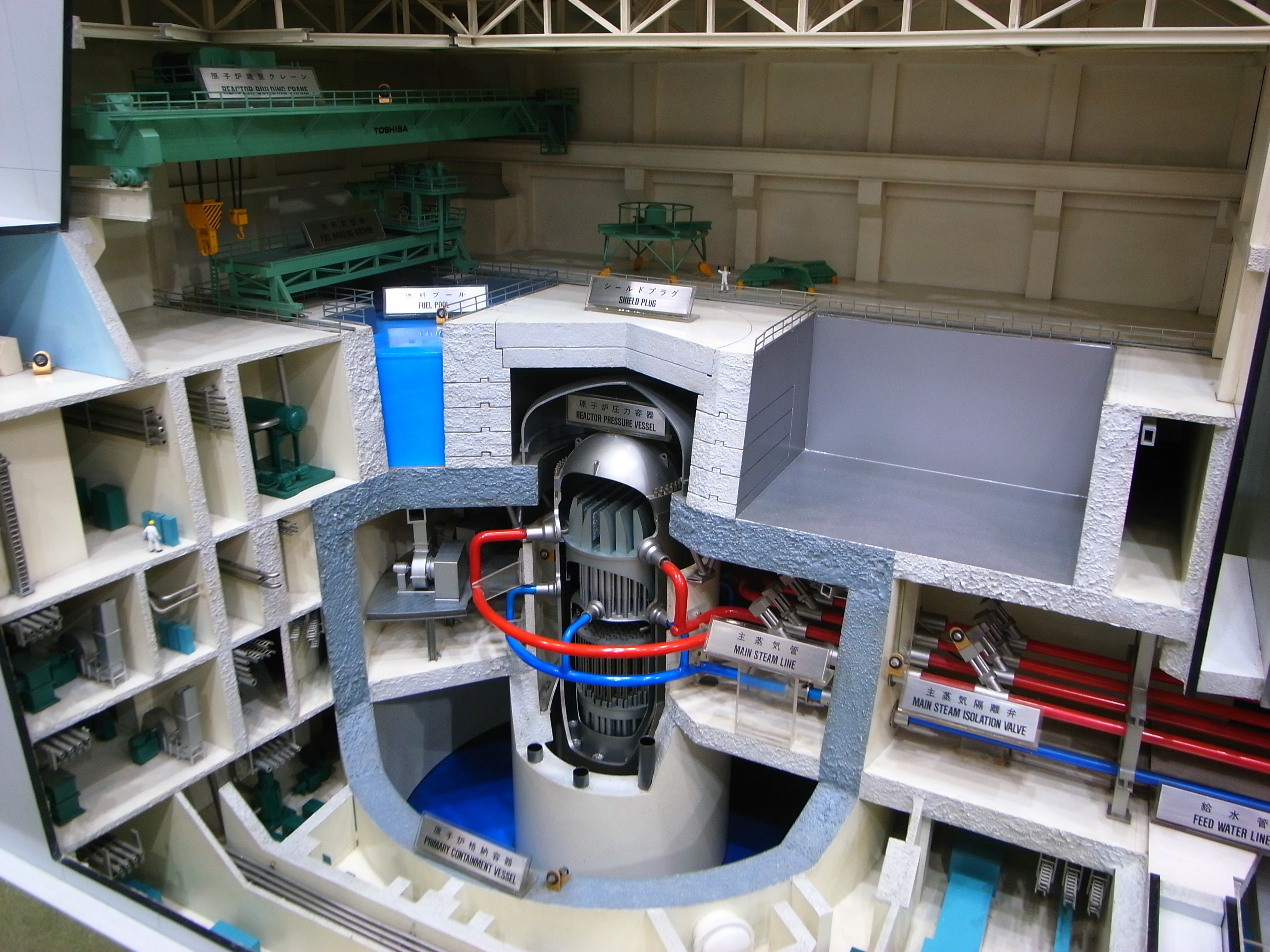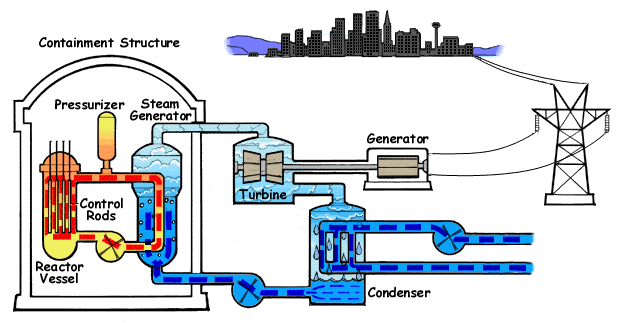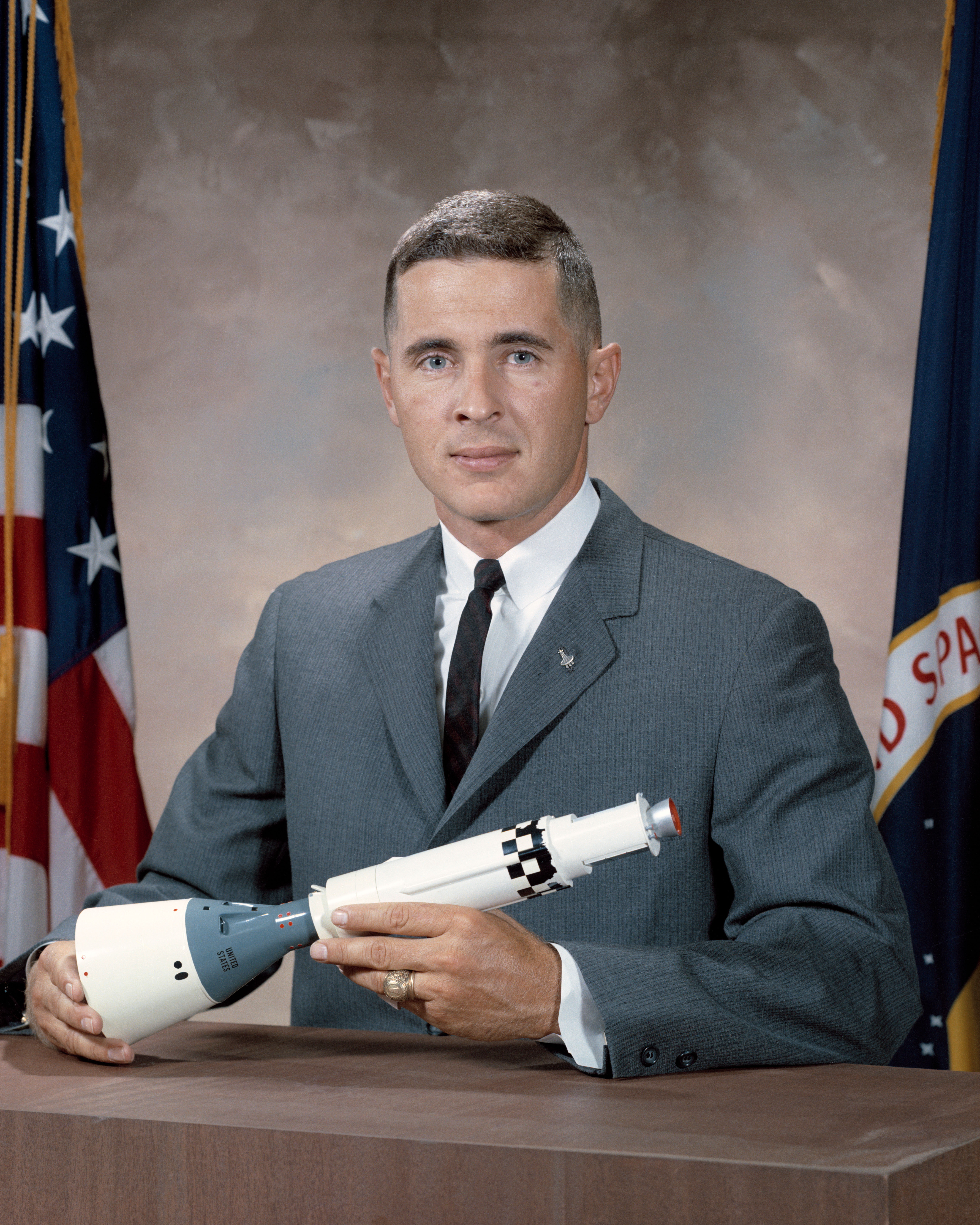|
AP1000
The AP1000 is a nuclear power plant designed and sold by Westinghouse Electric Company. The plant is a pressurized water reactor with improved use of passive nuclear safety and many design features intended to lower its capital cost and improve its economics. The design traces its history to the Westinghouse 4-loop SNUPPS design, which was produced in various locations around the world. (Note: System 80 was a similar vintage nuclear steam supply system made by Combustion Engineering.) Further development of the 4-loop reactor and the ice-condenser containment initially led to the AP600 concept, with a smaller 600 to 700 MWe output, but this saw limited interest. In order to compete with other designs that were scaling up in size in order to improve capital costs, the design re-emerged as the AP1000 and found a number of design wins at this larger size. Twelve AP1000s are currently in operation or under construction. Four are in operation at two sites in China, two at San ... [...More Info...] [...Related Items...] OR: [Wikipedia] [Google] [Baidu] |
Sanmen Nuclear Power Station
The Sanmen Nuclear Power Station () is a nuclear power station in Sanmen County, Zhejiang, China. Sanmen is the first implementation of the AP1000 pressurized water reactor (PWR) developed by Westinghouse Electric Company. History The contract for the plant was agreed in July 2007. Announcement of the project start came roughly twelve months after Westinghouse won a bidding contest over other companies. The contract for the new plant involved The Shaw Group (now Chicago Bridge and Iron), a minority shareholder in Westinghouse. Westinghouse was controlled by Japanese Toshiba. The Shaw Group did provide engineering, procurement, commissioning, information management and project management services. The first pair of reactors were estimated to cost CNY 32.4 billion yuan, later estimates in 2013 gave figures of CNY 40.1 billion ($6.12 billion USD). The final sum was CNY 10 billion yuan higher. Groundbreaking for the first and second units was held 26 February 2008. Excava ... [...More Info...] [...Related Items...] OR: [Wikipedia] [Google] [Baidu] |
Westinghouse Electric Company
Westinghouse Electric Company LLC is an American nuclear power company formed in 1999 from the nuclear power division of the original Westinghouse Electric Corporation. It offers nuclear products and services to utilities internationally, including nuclear fuel, service and maintenance, instrumentation, control and design of nuclear power plants. Westinghouse's world headquarters are located in the Pittsburgh suburb of Cranberry Township, Pennsylvania. The company's main product is the AP1000, a modern pressurized water reactor (PWR) design with many passive safety features and modular construction intended to lower construction time and cost. Twelve AP1000 reactors are currently in operation with a further nineteen in various stages of planning. The company was initially formed as CBS Corporation spun off the remaining pieces of Westinghouse's industrial concerns, as part of Westinghouse's re-creation as a media company. Portions of their nuclear business were initially purc ... [...More Info...] [...Related Items...] OR: [Wikipedia] [Google] [Baidu] |
Haiyang Nuclear Power Plant
Haiyang Nuclear Power Plant is a nuclear power plant in Haiyang, Shandong province, China. It is the second site to house AP1000 units, after the Sanmen Nuclear Power Station. History Groundbreaking happened one month ahead of schedule on July 30, 2008. Construction of the first unit began in September 2009. Civil construction of Unit 1 was completed 29 March 2013. Fuel loading at Haiyang 1 began on June 22, 2018. First grid connection was on 17 August 2018. Unit 1 began commercial operation on 22 October 2018. Construction of unit 2 started in June 2010, at that time the fourth Chinese AP1000 project together with the two units of the Sanmen NPP. Commercial operation began in January 2019, after having completed a full-power test run for a week (168 hours). Both units will provide together about 20 TWh of electricity to the grid of Shandong province. On July 7, 2022, construction began on unit 3 after authorization had been granted. Reactor data District Heating ... [...More Info...] [...Related Items...] OR: [Wikipedia] [Google] [Baidu] |
Vogtle Electric Generating Plant
The Alvin W. Vogtle Electric Generating Plant, also known as Plant Vogtle ( ), is a four-unit nuclear power plant located in Burke County, near Waynesboro, Georgia, in the southeastern United States. With a power capacity of 4,536 megawatts, it is the largest nuclear power plant in the United States (as of 2025), when construction of Units 3 & 4 began. It is also the only nuclear plant in the country with four units. It is named after a former Alabama Power and Southern Company board chairman, Alvin Vogtle. The first two units are Westinghouse pressurized water reactors (PWR), with a General Electric steam turbine and electric generator. Units 1 and 2 were completed in 1987 and 1989, respectively, and have a gross electricity generation capacity of 1,215 MW, for a combined capacity of 2,430 MW. The twin natural-draft cooling towers are tall and provide cooling to the plant's main condensers. Four smaller mechanical draft cooling towers provide ... [...More Info...] [...Related Items...] OR: [Wikipedia] [Google] [Baidu] |
Generation III Reactor
Generation III reactors, or Gen III reactors, are a class of nuclear reactors designed to succeed Generation II reactors, incorporating evolutionary improvements in design. These include improved fuel technology, higher thermal efficiency, significantly enhanced safety systems (including passive nuclear safety), and standardized designs intended to reduce maintenance and capital costs. They are promoted by the Generation IV International Forum (GIF). The first Generation III reactors to begin operation were Kashiwazaki 6 and 7 advanced boiling water reactors (ABWRs) in 1996 and 1997. From 2012, both have been shut down due to a less permissive political environment in the wake of the Fukushima nuclear accident. Due to the prolonged period of stagnation in the construction of new reactors and the continued (albeit declining) popularity of Generation II/II+ designs in new construction, relatively few third generation reactors have been built. Overview The older Gen II reactors ... [...More Info...] [...Related Items...] OR: [Wikipedia] [Google] [Baidu] |
Pressurized Water Reactor
A pressurized water reactor (PWR) is a type of light-water nuclear reactor. PWRs constitute the large majority of the world's nuclear power plants (with notable exceptions being the UK, Japan, India and Canada). In a PWR, water is used both as a neutron moderator and as coolant fluid for the reactor core. In the core, water is heated by the energy released by the fission of atoms contained in the fuel. Using very high pressure (around 155 bar: 2250 psi) ensures that the water stays in a liquid state. The heated water then flows to a steam generator, where it transfers its thermal energy to the water of a secondary cycle kept at a lower pressure which allows it to vaporize. The resulting steam then drives steam turbines linked to an electric generator. A boiling water reactor (BWR) by contrast does not maintain such a high pressure in the primary cycle and the water thus vaporizes inside of the reactor pressure vessel (RPV) before being sent to the turbine. Most PWR designs ma ... [...More Info...] [...Related Items...] OR: [Wikipedia] [Google] [Baidu] |
AP600
The AP600 is a model of relatively small, 600 MWe nuclear power plant designed by Westinghouse Electric Company. The AP600 has passive safety features characteristic of the Generation III reactor concept. The projected core damage frequency is nearly 1000 times less than today's Nuclear Regulatory Commission (NRC) requirements, on par with plants currently being considered for construction. The design has been scaled up and improved with the AP1000. Certification testing and analysis of the AP600 and AP1000 reactor designs for Westinghouse were conducted at the APEX facility at Oregon State University. The one-quarter scale reduced pressure integral system certified the passively safe systems that cool the reactor core using gravity and natural circulation. The NRC's final design certification was received in 1999 but no orders were ever placed. A large reason Westinghouse entered development of the AP1000 was to improve the economies of scale In microeconomics, econ ... [...More Info...] [...Related Items...] OR: [Wikipedia] [Google] [Baidu] |
CAP1400
The CAP1400 is a Chinese Generation III Pressurized water reactor developed by the State Power Investment Corporation. It was based on Westinghouse AP1000 design but with full Chinese intellectual property rights. Design The CAP-1400 is a Pressurized water reactor, in which the primary coolant (water) is pumped under high pressure to the reactor core where it is heated by the energy released by the fission of atoms. CAP1400 has two primary coolant loops that transfer the heat generated by the fission reaction of 235U in the reactor core to the steam generator,each loop consists of a hot leg, two cold legs, one steam generator, and two canned pumps. CAP1400 has one pressurizer (PRZ) connected to one of the hot legs by a surge line.The fuel core of the reactor has 193 fuel assemblies. CAP-1400 has a design life of 60 years,and has refueling interval of 18 months, and Averaged discharge fuel burnup of ≥50 000MWd·(tU)−1.The system operated pressure is 15.5Mpa,and Coolant av ... [...More Info...] [...Related Items...] OR: [Wikipedia] [Google] [Baidu] |
Passive Nuclear Safety
Passive nuclear safety is a design approach for safety features, implemented in a nuclear reactor, that does not require any active intervention on the part of the operator or electrical/electronic feedback in order to bring the reactor to a safe shutdown state, in the event of a particular type of emergency (usually overheating resulting from a loss of coolant or loss of coolant flow). Such design features tend to rely on the engineering of components such that their predicted behaviour would slow down, rather than accelerate the deterioration of the reactor state; they typically take advantage of natural forces or phenomena such as gravity, buoyancy, pressure differences, conduction or natural heat convection to accomplish safety functions without requiring an active power source. Many older common reactor designs use passive safety systems to a limited extent, rather, relying on active safety systems such as diesel-powered motors. Some newer reactor designs feature more passiv ... [...More Info...] [...Related Items...] OR: [Wikipedia] [Google] [Baidu] |
Nuclear Regulatory Commission
The United States Nuclear Regulatory Commission (NRC) is an independent agency of the United States government tasked with protecting public health and safety related to nuclear energy. Established by the Energy Reorganization Act of 1974, the NRC began operations on January 19, 1975, as one of two successor agencies to the United States Atomic Energy Commission. Its functions include overseeing reactor safety and security, administering reactor licensing and renewal, licensing and oversight for fuel cycle facilities, licensing radioactive materials, radionuclide safety, and managing the storage, security, recycling, and disposal of spent fuel. History Prior to 1975 the Atomic Energy Commission was in charge of matters regarding radionuclides. The AEC was dissolved, because it was perceived as unduly favoring the industry it was charged with regulating.John Byrne and Steven M. Hoffman (1996). ''Governing the Atom: The Politics of Risk'', Transaction Publishers, p. 163. Th ... [...More Info...] [...Related Items...] OR: [Wikipedia] [Google] [Baidu] |
Santee Cooper
__NOTOC__ Santee Cooper, also known officially from the 1930s as the South Carolina Public Service Authority, is South Carolina's state-owned electric and water utility that came into being during the New Deal as both a rural electrification and public works project that created two lakes and cleared large tracts of land while building hydro-electric dams and power plants. Its headquarters are located in Moncks Corner, South Carolina. As one of the largest power providers in South Carolina, Santee Cooper directly serves more than 165,000 residential and commercial customers in Berkeley County, South Carolina, Berkeley, Georgetown County, South Carolina, Georgetown, and Horry County, South Carolina, Horry counties. With a fuel and energy supply that includes coal, nuclear, oil, natural gas, hydroelectric, and other renewable sources, Santee Cooper supplies power to the cities of Bamberg, South Carolina, Bamberg and Georgetown, South Carolina, Georgetown, 30 large industrial custom ... [...More Info...] [...Related Items...] OR: [Wikipedia] [Google] [Baidu] |
Nuclear Power Plant
A nuclear power plant (NPP), also known as a nuclear power station (NPS), nuclear generating station (NGS) or atomic power station (APS) is a thermal power station in which the heat source is a nuclear reactor. As is typical of thermal power stations, heat is used to generate steam that drives a steam turbine connected to a electric generator, generator that produces electricity. , the International Atomic Energy Agency reported that there were 410 nuclear power reactors in operation in 32 countries around the world, and 57 nuclear power reactors under construction. Most nuclear power plants use thermal reactors with enriched uranium in a Nuclear fuel cycle#Once-through nuclear fuel cycle, once-through fuel cycle. Fuel is removed when the percentage of neutron poison, neutron absorbing atoms becomes so large that a nuclear chain reaction, chain reaction can no longer be sustained, typically three years. It is then cooled for several years in on-site spent fuel pools be ... [...More Info...] [...Related Items...] OR: [Wikipedia] [Google] [Baidu] |






